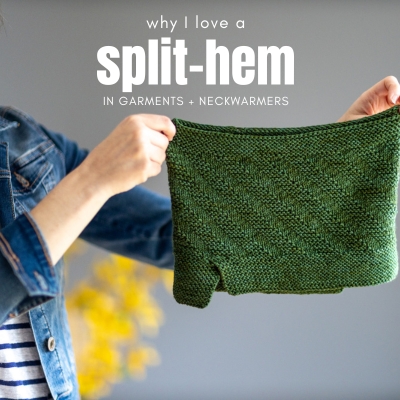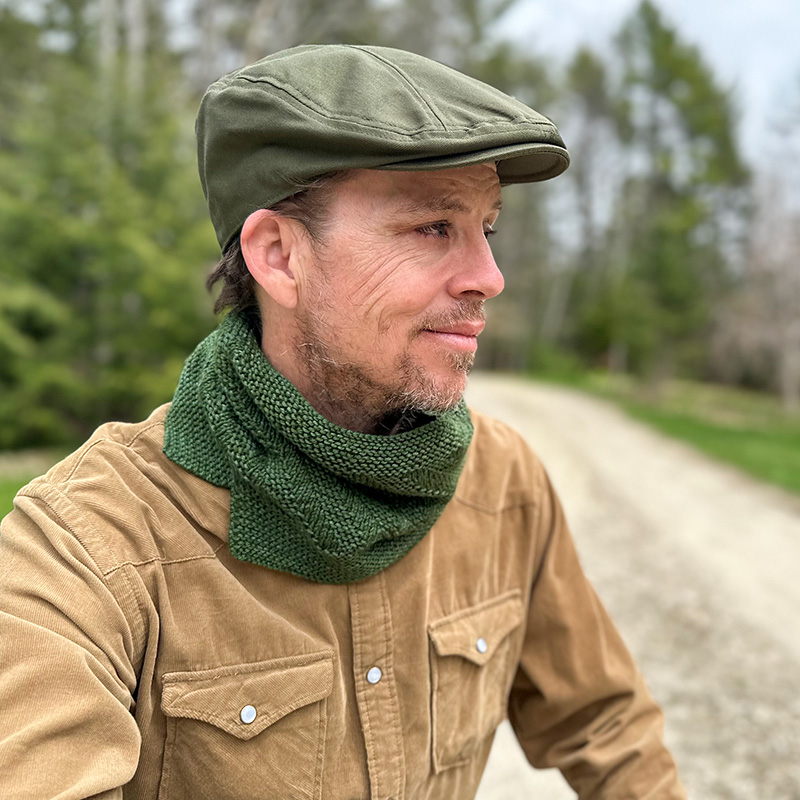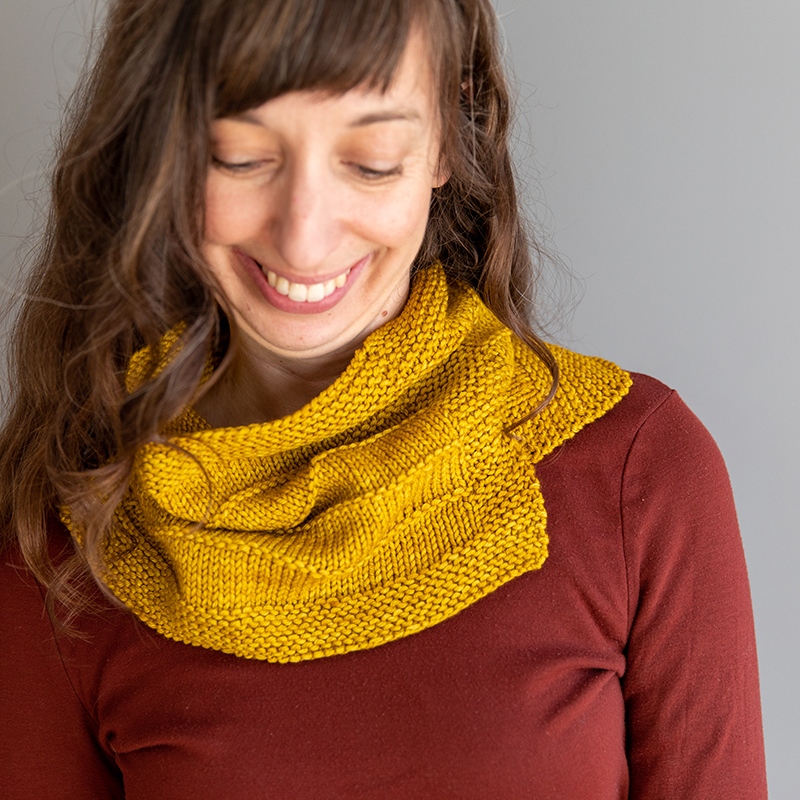If you’re familiar with my garment patterns, then you may already know how much I love a split-hem design feature. You may think that it’s purely an aesthetic element but there are also very practical and functional reasons for them too. In this post I’m diving into the topic of split-hems – what they are, why I think they’re great, and examples of them in both garments and accessories.
What is a split-hem?
A split-hem is a design element where the hemline has slits in it, typically on either side of the garment.
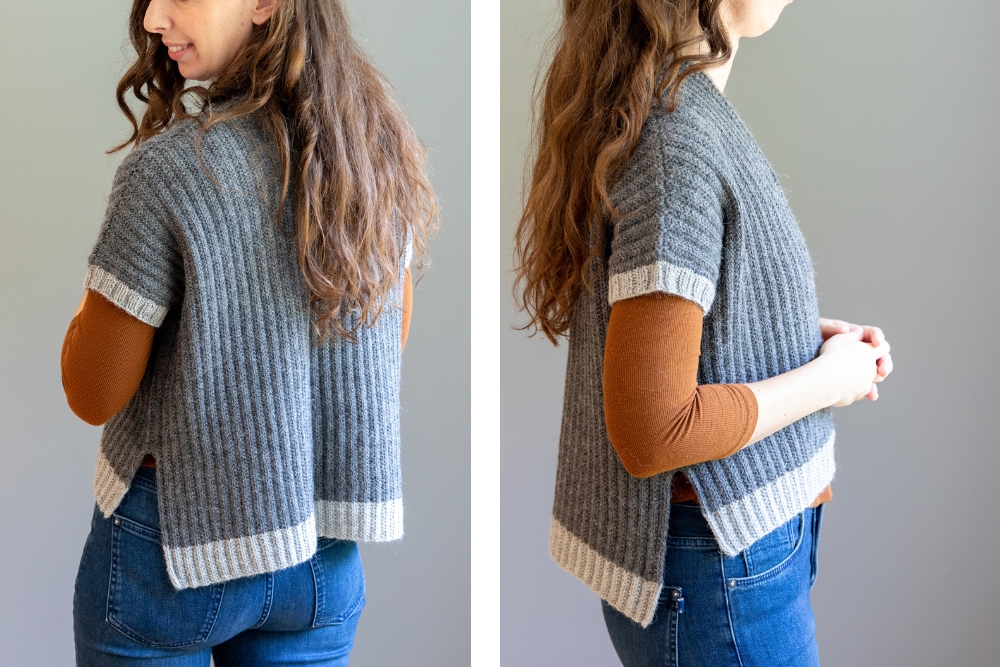
What are the benefits of a split-hem?
In a garment, I love a split hem for a few reasons:
- It allows for more movement down at the hips. As a pear-shaped body (my hips are much wider than my bust), I appreciate this about a split-hem because it allows for extra room down at the hips without necessarily having to incorporate body shaping into the body of the garment.
- The fabric can lay flatter. Depending on the yarn/stitch pattern, some garments may experience a bunching-effect where the body fabric meets the hem. A split-hem can ease this bunching and allow for a flatter laying garment down at the bottom.
- It provides an interesting, modern look. This may just be my personal opinion, but I think a split-hem provides visual interest and a gives a modern vibe to any garment.
What are the different variations of split-hems?
There are so many different variations but here are some different takes I’ve personally used in my split-hem garments:
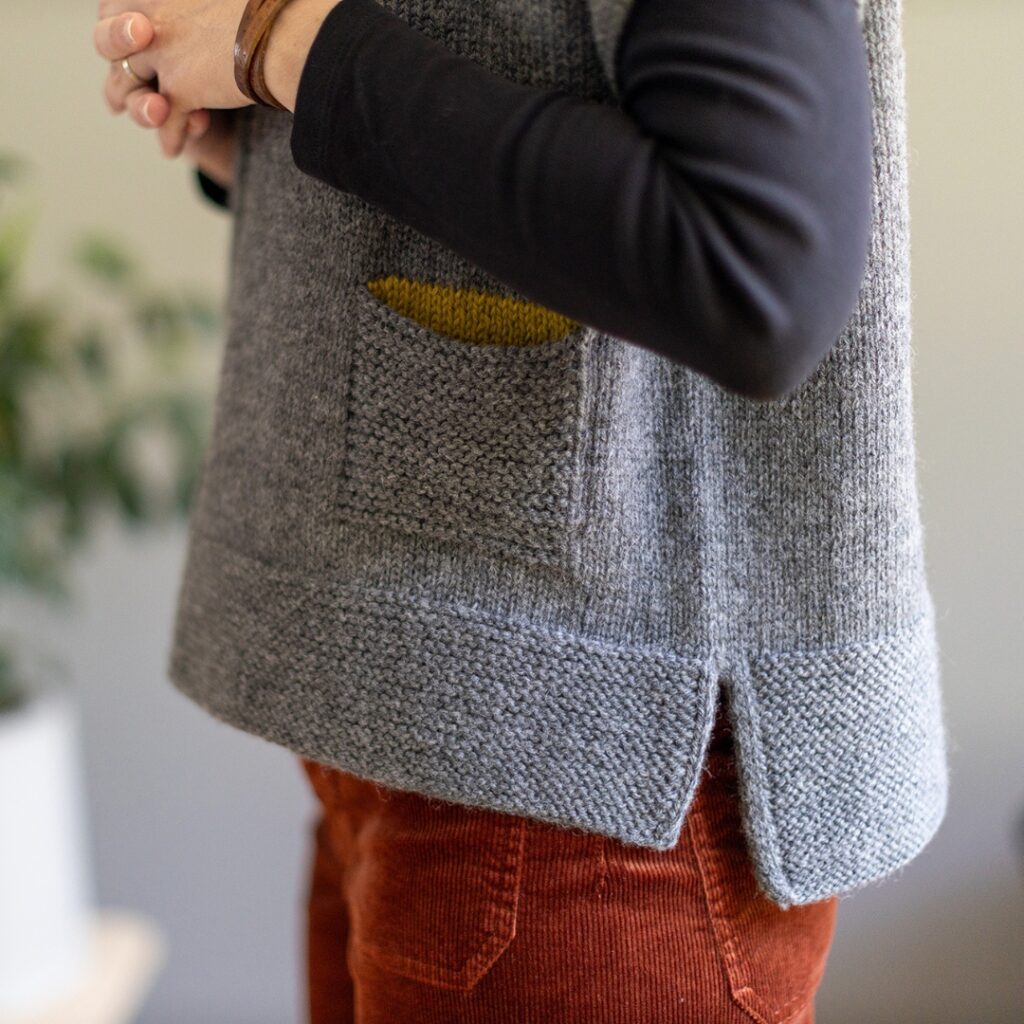
I-cord edged split-hem
An I-cord edge provides a raised, flat edgeline on each side of the slit. Shown here in my Alanis top.
Overlapping split-hem
An overlap is where one of the sides’ edge stitches overlaps on top of the other. Shown here in my Camden Hills Poncho.
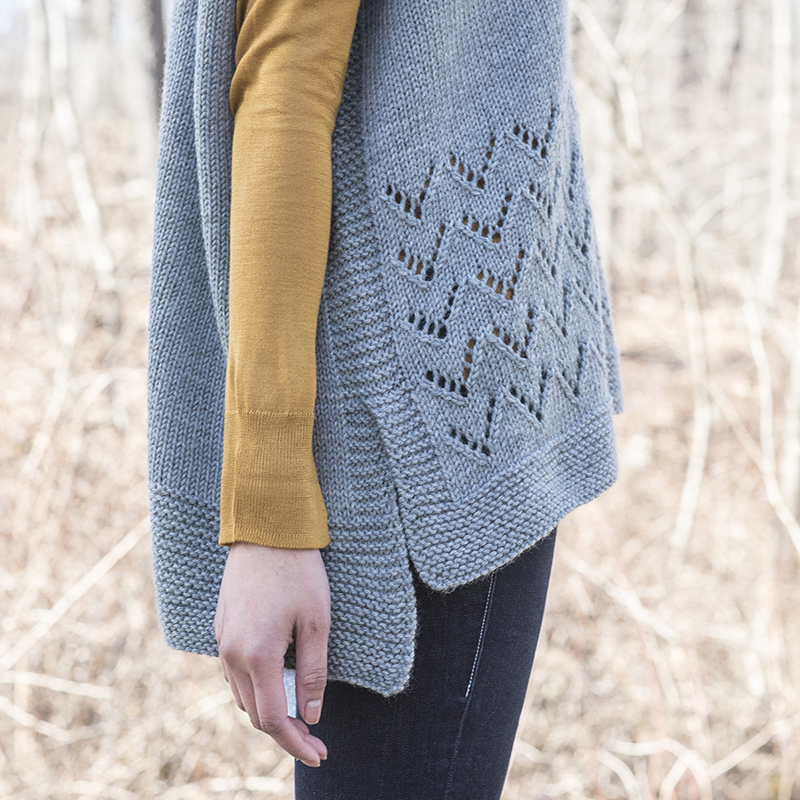
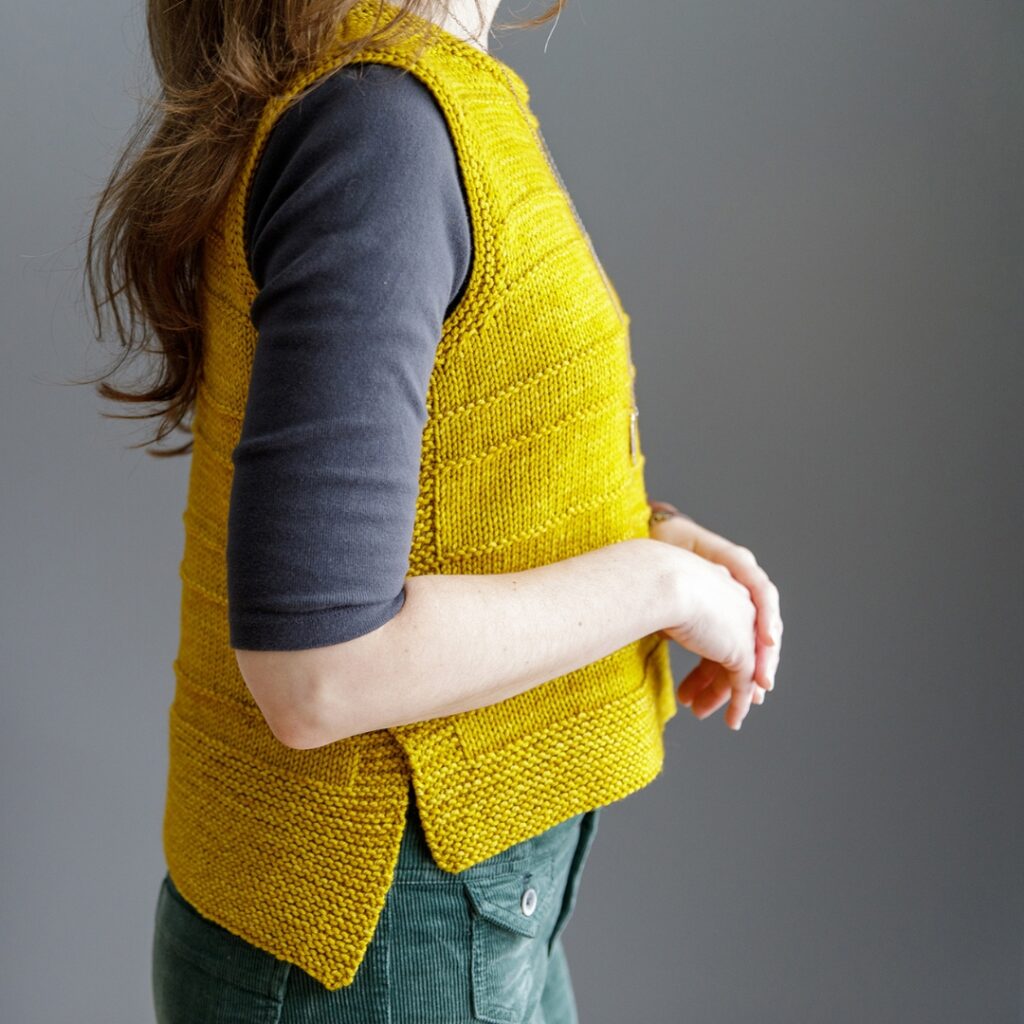
Hi/Low split-hem
Hi/Low is when the Back hem is longer than the Front hem. Shown here in my Low-key vest.
Can split-hems be utilized in other types of projects?
Yes! In particular, I love utilizing a split-hem in neckwarmers. It’s not only an unexpected design element, but it’s also super functional as well. Just as split-hems are useful in garments to provide movement down at the hips, in a neckwarmer they provide movement at the shoulders/collar-bone. A split-hem allows the neckwarmer to open up at the bottom and this allows it to sit on the shoulders and collar-bone area really nicely.
Below are 2 examples to demonstrate this:
How is a split-hem constructed?
If a garment is knit from the bottom-up, typically you work the Front and Back Hem separately and then you have a “joining row/round” where you join the Front and Back Hem together. In a top-down construction, right before you would start the hem, you separate half of your stitches (usually by putting them on a holder) and then work each Front and Back Hem separately as you work the bottom hem for each side.
I created the video tutorial below that demonstrates the joining process in a bottom-up construction and where there is also an overlap. It’s specifically for my Low-Key Cowl or Vest, but the concept is similar for other bottom-up split-hem designs. You can view it below:
Examples of my split-hem garment patterns
Interested in knitting your own split-hem piece? Below are all of my patterns that utilize this design feature. Also, a question I receive a lot is which of my designs are good for split-hem newbies. I would recommend starting with either of the neckwarmers – Low-key Cowl or Fetching Fern. They are both 1 skein projects and are great ways to practice the technique.
-
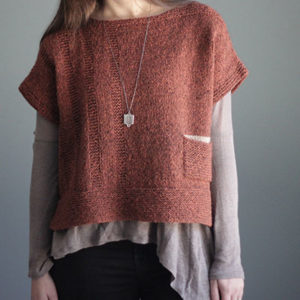 Alanis$7.00
Alanis$7.00 -
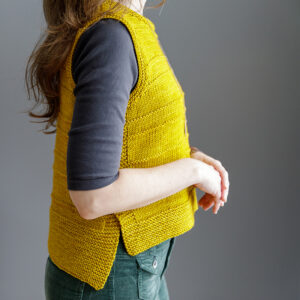 Low-key$7.00
Low-key$7.00 -
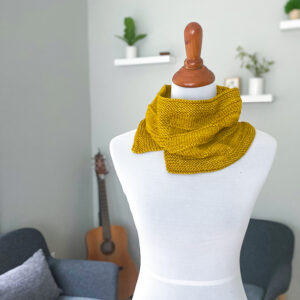 Low-key Cowl$5.00
Low-key Cowl$5.00 -
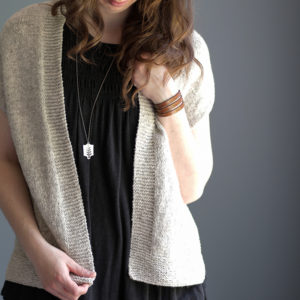 Carley$7.00
Carley$7.00 -
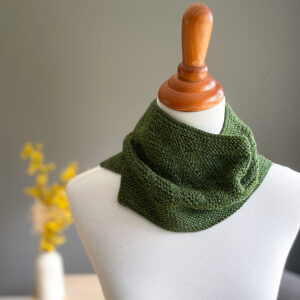 Fetching Fern$5.00
Fetching Fern$5.00 -
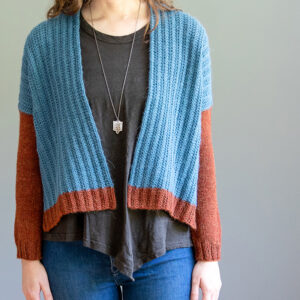 Morgan$9.00
Morgan$9.00 -
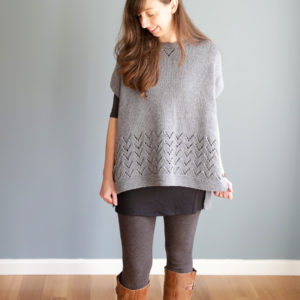 Camden Hills Poncho$6.00
Camden Hills Poncho$6.00 -
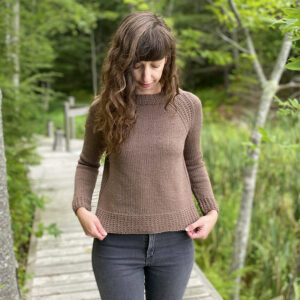 Dale$6.50
Dale$6.50 -
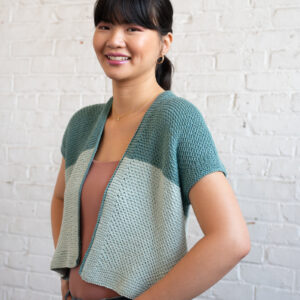 Rising Tide$8.00
Rising Tide$8.00 -
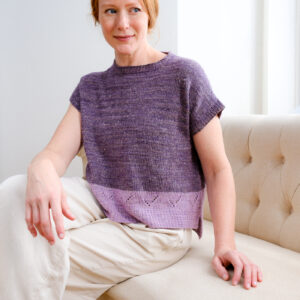 First Crocus$8.00
First Crocus$8.00 -
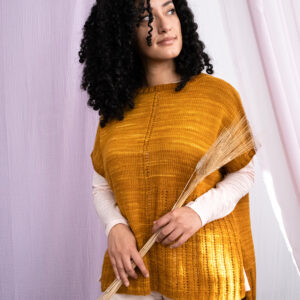 Forsythia$8.00
Forsythia$8.00
Do you have any split-hem questions? I’m happy to help! Send me a message by filling out my contact form here.

